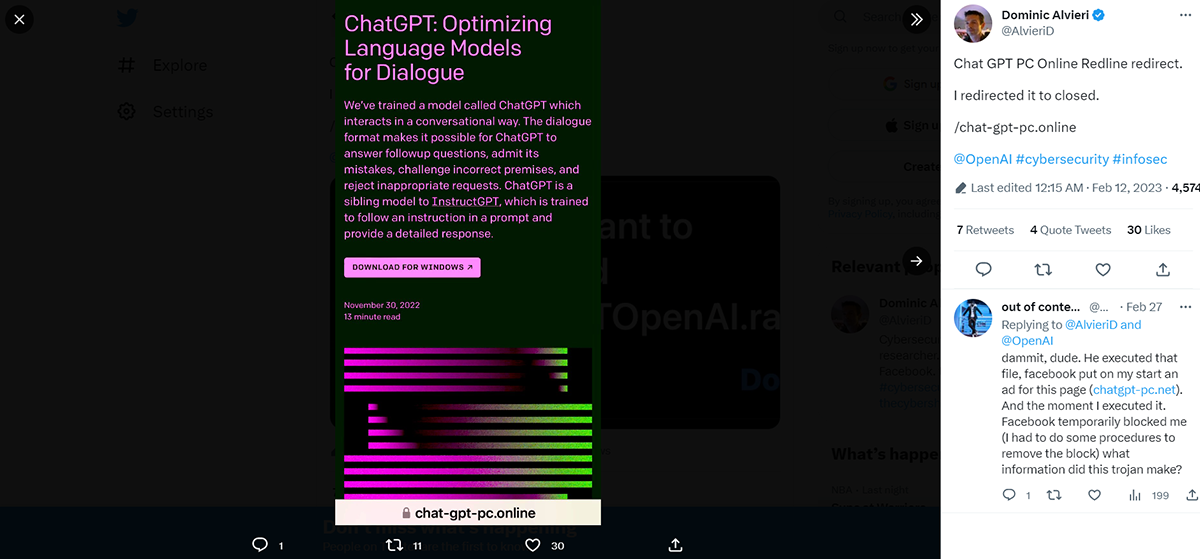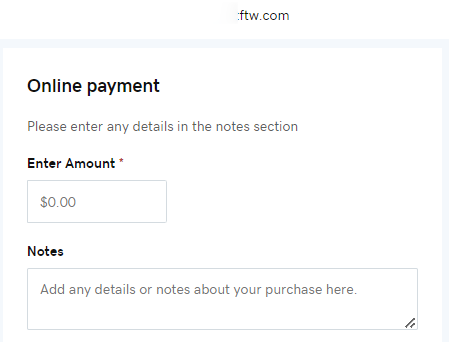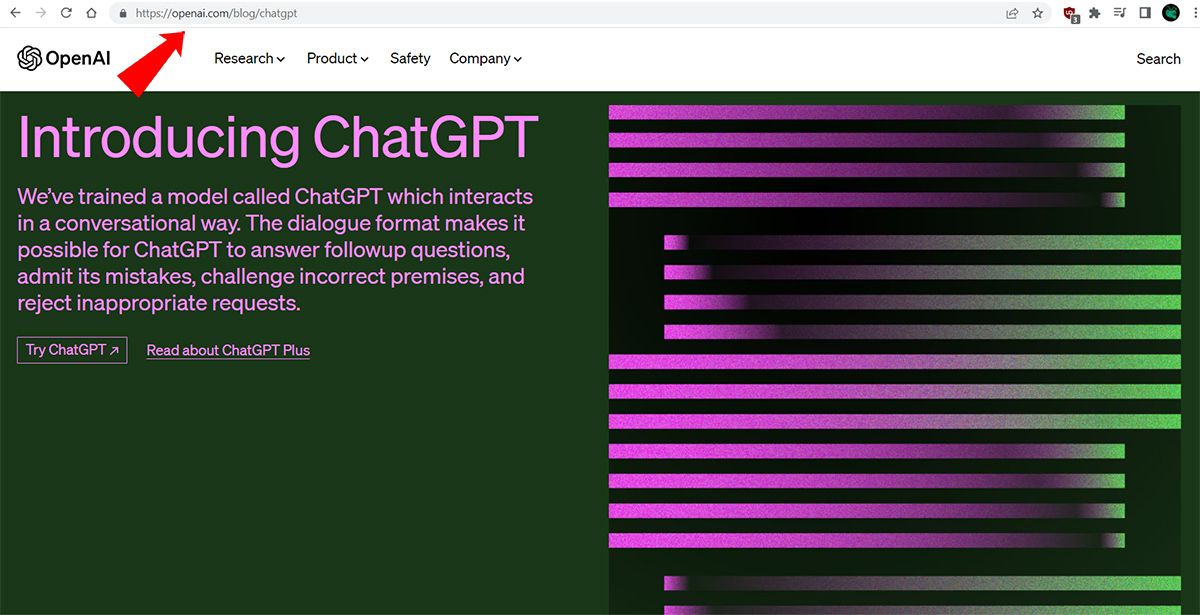
Spotting the Difference: How to Recognize Legitimate ChatGPT Responses Amidst Imposters

Spotting the Difference: How to Recognize Legitimate ChatGPT Responses Amidst Imposters
Quick Links
- How to Spot a ChatGPT Scam
- Examples of ChatGPT Scams
- Where to Find the Real ChatGPT
- Does ChatGPT Have an App?
Key Takeaways
To avoid ChatGPT scams, go to the real ChatGPT website at https://chat.openai.com/ or elsewhere on openai.com. Do not click suspicious links in emails or elsewhere on the web.
ChatGPT is the most sophisticated chatbot ever made—so far. This large language model (LLM)-based chatbot is all the rage, so it’s no surprise that scammers are advertising fake ChatGPT scams to steal people’s personal information.
How to Spot a ChatGPT Scam
You can avoid getting scammed by fake versions of ChatGPT by practicing safe internet browsing. Here are some crucial tips for keeping yourself safe online—both from ChatGPT scams and other threats:
Check the Website Address
Scammers may try to trick you into submitting personal information through a fake website that looks similar to the real ChatGPT website, which is on openai.com — either https://chat.openai.com/ for the service or https://openai.com/blog/chatgpt for the informational signup page.
Read the website address carefully to make sure it’s the real deal. You can do this by looking at the top of your browser’s window.A fake website can be spelled incorrectly, have different words, have different domain extensions, and more.
For example, our website address at How-To Geek is “howtogeek.com”. A scammer trying to imitate us by using a fake website may have a website address like “howtogeek.org” or “how2geek.com”.
Examine the Email
If a scammer is targeting you through an email, they can imitate a real company or real people. Carefully read the email address to see if it is spelled correctly.
OpenAI has emailed us announcements from noreply@email.openai.com . Going straight to a website rather than clicking links in an email is a good security practice, whether you want to access your bank’s website or ChatGPT.
Avoid replying to suspicious emails, too. You’re better off visiting the website directly to check for official information. Scammers (or their bots) that receive a reply to their scam emails can register your email address as active, which can lead to you getting more and more scam emails. Don’t reply to suspicious messages—mark them as spam so that they go straight to your junk mail folder!
Don’t Click Suspicious Links
Fake links to ChatGPT can lead you to web pages that look similar to the real thing. On these fake pages, you may be asked to input personal information. There are lots of ways to disguise links, so the best protection against this kind of threat is to question the context.
For example, if you get an email from someone you don’t know with an apparent link to ChatGPT, this is likely a scam. Another example would be if you’re browsing an unrelated website and the comment section seemingly has a link to ChatGPT.
Be sure to go directly to the official ChatGPT website at https://chat.openai.com/ . You can plug chat.openai.com into your web browser’s address bar rather than clicking links to it elsewhere, or create a bookmark in your browser to access it.
Examples of ChatGPT Scams
In February 2023, Dominic Alvieri, a cybersecurity analyst and security researcher, tweeted about a fake ChatGPT website . The website address for this fake looks almost legitimate, so you can see how it can be tricky to identify ChatGPT frauds.
The website address is different from the one where you’ll find the real ChatGPT, and there’s also a “DOWNLOAD FOR WINDOWS” button. This is something that’s not featured on the real ChatGPT website. That button redirects you to a download page for something called “ChatGPTOpenAI.rar”, which turned out to be a type of malware called “RedLine Stealer”.

Dominic Alvieri / Twitter
While these fakes can be somewhat convincing, there are also some poorly cobbled-together attempts to scam you. For example, here’s a ChatGPT scam we found. This is a purchase page for nothing. There are no products or services mentioned—it’s just a window to enter your personal information.

If the aforementioned lack of detail wasn’t enough of a giveaway, there’s the hilariously fake website address featuring the term “ftw “. This looks more like a gamer tag than a legitimate website address.
The only way this fake website address could be any more obvious is if it contained numbers like “420” or “69”. Somehow, unlike most of the other ChatGPT frauds, this particularly poor attempt to scam people is (as of writing this) still live. Maybe that’s because it does such a bad job at scamming people that it’s not considered a threat. Point and laugh, friends.
Where to Find the Real ChatGPT

The website address where you’ll find the real ChatGPT is one of the following:
https://openai.com/blog/chatgpt
https://chat.openai.com/chat
There isn’t any download or payment required to use the base version of ChatGPT.
However, OpenAI has created a premium version of this chatbot called ChatGPT Plus. ChatGPT Plus comes at a subscription cost of $20 per month. You can learn more on ChatGPT Plus’s official webpage .
Does ChatGPT Have an App?
No, ChatGPT does not have an app . It is currently only directly accessible through your browser via the website address mentioned above (https://openai.com/blog/chatgpt ).
While ChatGPT has been used as part of some app functions (like with Duolingo and Stripe ), there is (at the time of writing this) no ChatGPT app that is made and run by the company that created ChatGPT (OpenAI).
Related: How to Use ChatGPT Like Google Assistant on Android
Also, there is no version of ChatGPT available for download—it’s a browser-only chatbot. However, you can install it as an “app” with some browsers. For example, you can use Microsoft Edge to download the website as an “app”. This is done by clicking the ellipsis button in the top-right, hovering over “Apps” and then clicking “Install this site as an app.” This will let you open ChatGPT’s official webpage from your desktop.
There are lots of ChatGPT-like chatbots out there. These chatbots imitate ChatGPT in that they use similar—albeit less sophisticated—AI to reply to your messages. None of these clones are created by OpenAI.
With that said, clones are different from scams. A lot of the ChatGPT alternatives you’ll find on the Google Play store (and elsewhere) are simple chatbots that are only trying to capitalize on ChatGPT’s current fame. Many of them are not explicitly trying to steal your personal information.
Conversely, some of them can be scams, so you should always be careful when downloading apps! Keep an eye out for imitation ChatGPT apps that ask you to input credit card details or other personal information. These are the ones most likely to be scams.
Related: Does ChatGPT Have an App?
Also read:
- [New] The Art of Package Revelation Amplifying Initial Impressions
- [Updated] 2024 Approved Universal Synchronization Zoom on Phones, Tablets, PCs All
- [Updated] Cinematic Continuity A Kinemaster-Led Guide for 2024
- [Updated] The Path to Perfection Editing Numbers on TikTok
- [Updated] The Path to Pristine Zoom Video Settings
- [Updated] Ultimate Share Worthiness Creator
- Dive Into New Tongues for Just $0.55 Per Lesson This Year
- How To Transfer Data From iPhone 8 To Android? | Dr.fone
- In 2024, How to use Pokemon Go Joystick on Samsung Galaxy S24 Ultra? | Dr.fone
- In 2024, Top 10 Fingerprint Lock Apps to Lock Your Sony Phone
- In 2024, Ultimate Sea Snag Footage - Top 5 Picks
- Regaining Full Functionality of Your Windows Scanner
- Troubleshooting Your PS4's Noisy Fans – Understanding and Solutions
- Title: Spotting the Difference: How to Recognize Legitimate ChatGPT Responses Amidst Imposters
- Author: Mark
- Created at : 2024-12-28 16:44:11
- Updated at : 2025-01-02 16:06:25
- Link: https://some-guidance.techidaily.com/spotting-the-difference-how-to-recognize-legitimate-chatgpt-responses-amidst-imposters/
- License: This work is licensed under CC BY-NC-SA 4.0.